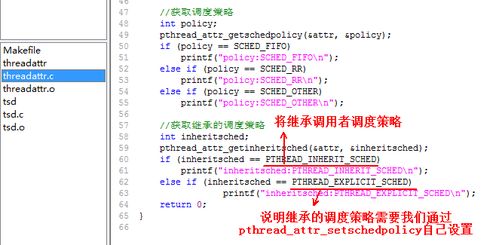Title: Mastering POSIX Programming: A Comprehensive Guide
Introduction to POSIX Programming
POSIX (Portable Operating System Interface) is a set of standards that defines the interface between a UNIXlike operating system and user applications. It provides a standardized API (Application Programming Interface) for compatibility across different UNIX and UNIXlike systems. POSIX programming encompasses a wide range of functionalities, including file I/O, process management, interprocess communication, threading, and more. In this comprehensive guide, we'll delve into various aspects of POSIX programming, exploring key concepts, best practices, and practical examples.
Understanding POSIX Standards
POSIX standards are defined by the IEEE (Institute of Electrical and Electronics Engineers) and are aimed at ensuring compatibility and portability across UNIXlike operating systems. The standards cover various aspects of system programming, including:
1.
File System Operations
: POSIX defines functions for file creation, deletion, reading, and writing, along with directory manipulation operations.2.
Process Management
: POSIX specifies functions for process creation, termination, and management, along with process scheduling and control.3.
InterProcess Communication (IPC)
: POSIX provides mechanisms for communication between processes, such as pipes, message queues, shared memory, and semaphores.4.
Threading
: POSIX threading APIs enable multithreaded programming, allowing applications to utilize multiple threads of execution for concurrent tasks.5.
Signal Handling
: POSIX defines how signals, such as interrupts or exceptions, are handled by processes.6.
Time and Date Functions
: POSIX includes functions for manipulating time and date, supporting tasks like timestamping, scheduling, and timebased operations.7.
System Configuration and Environment
: POSIX specifies functions for accessing system configuration parameters, environment variables, and system information.Key Concepts in POSIX Programming
1.
File I/O Operations
:POSIX provides functions like `open`, `read`, `write`, and `close` for performing file I/O operations. It also supports file locking mechanisms to manage concurrent access to files.
2.
Process Creation and Management
:POSIX APIs such as `fork`, `exec`, and `wait` are used for process creation, execution, and synchronization. These functions enable the development of robust, multiprocess applications.
3.
InterProcess Communication
:POSIX IPC mechanisms like pipes, message queues, shared memory, and semaphores facilitate communication and synchronization between processes, enabling collaboration and data exchange.
4.
Threading
:POSIX threading APIs, including `pthread_create`, `pthread_join`, and `pthread_mutex_lock`, enable multithreaded programming for concurrent execution and resource sharing.
5.
Signal Handling
:POSIX signal handling functions like `signal` and `sigaction` allow processes to respond to various signals, such as interrupts or termination signals, ensuring proper error handling and cleanup.
6.
Error Handling
:
POSIX functions typically return error codes to indicate failures. Proper error handling, including error code checking and appropriate error recovery mechanisms, is crucial for robust and reliable applications.
Best Practices in POSIX Programming
1.
Ensure Portability
: Write POSIXcompliant code to ensure compatibility across different UNIXlike systems. Avoid relying on systemspecific features or behaviors.2.
Handle Errors Gracefully
: Always check return values of POSIX functions for errors and handle them gracefully. Provide meaningful error messages and perform appropriate error recovery actions.3.
Use Proper Synchronization
: Employ synchronization mechanisms like mutexes, semaphores, and condition variables to prevent race conditions and ensure data integrity in multithreaded and multiprocess applications.4.
Manage Resources Carefully
: Be mindful of resource allocation and deallocation. Properly release acquired resources like file descriptors, memory, and synchronization primitives to prevent resource leaks.5.
Follow Concurrency Guidelines
: Adhere to best practices for concurrent programming, such as minimizing shared mutable state, using threadsafe data structures, and avoiding deadlock and livelock scenarios.6.
Optimize Performance
: Optimize POSIX code for performance by minimizing system calls, reducing contention on shared resources, and leveraging asynchronous I/O and nonblocking techniques where applicable.Conclusion
POSIX programming provides a standardized interface for systemlevel programming on UNIXlike operating systems, enabling developers to write portable and robust applications. By understanding POSIX standards, key concepts, and best practices, developers can harness the power of POSIX APIs to build efficient, scalable, and reliable software systems. Whether you're developing system utilities, network applications, or embedded software, mastering POSIX programming is essential for achieving crossplatform compatibility and optimal performance.











